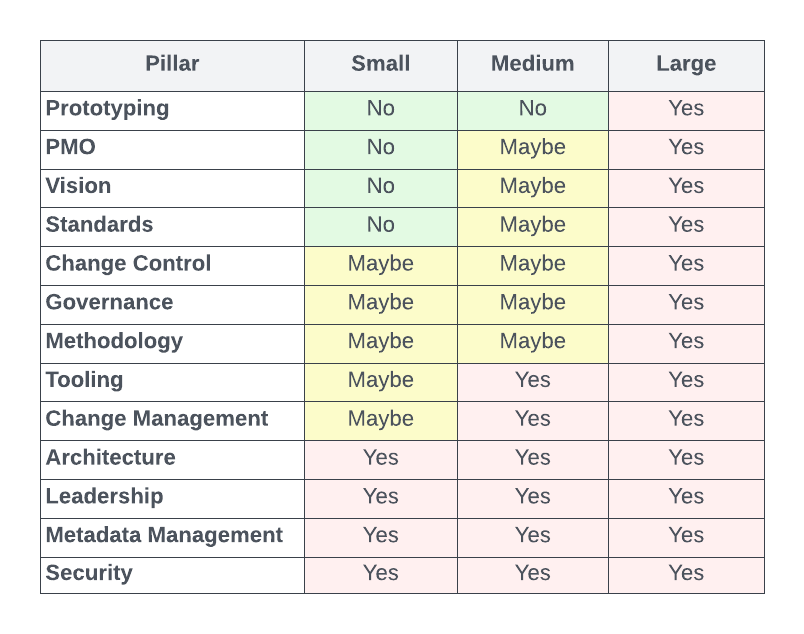Let’s start with a definition of what a Center of Excellent (CoE) is.
According to Wikipedia, it “is a team, a shared facility or an entity that provides leadership, best practices, research, support or training for a focus area”.
In our world, this can be translated into providing the “best of breed” across multiple facets of the Salesforce ecosystem. This includes a product owner, a healthy investment, a strategy, a clearly defined approach, the proper tools for the job, and the best design, implementation, and testing teams.
Going a level more granular, this can be reduced to 13 core pillars:
- Prototyping
- Project Management Office (PMO)
- Vision
- Standards
- Change Control
- Governance
- Methodology
- Tooling
- Change Management
- Architecture
- Leadership
- Metadata Management
- Security
Of course, not every org needs everything listed above. If you’re a small org, only a few pillars are critical. But as the project grows, they all become critical to long-term success. This roughly translates to the following:

Where
- Small = Solo or small implementation team (< 100 users)
- Medium = Medium-sized team, an SI, and external integrations (100 – 1000 users)
- Large = A multi-org and multi-cloud implementation (> 1000 users)
- No = Not critical
- Maybe = Not critical, but recommended
- Yes = Critical
The takeaway
We all know a Salesforce implementation that lacked direction and spiraled out of control. Well, a CoE is the best overall solution to manage that, as well as to minimize technical debt and to a higher return-on-investment (ROI).
Over the next several emails, I’ll take a closer look at each of these pillars in greater detail. In the meantime, if you’d like to learn about CoEs using a race car analogy, checkout the following article https://elements.cloud/blog/why-every-org-needs-a-center-of-excellence/
